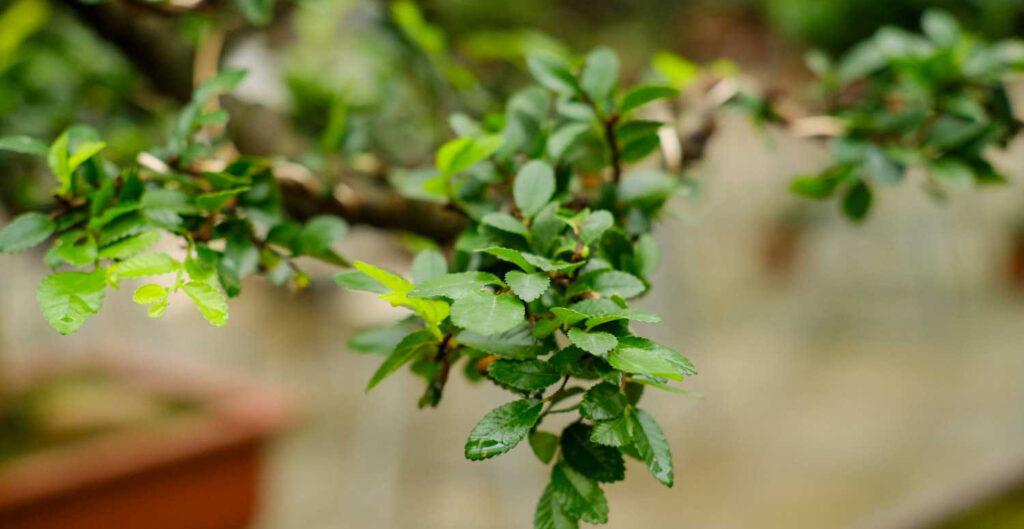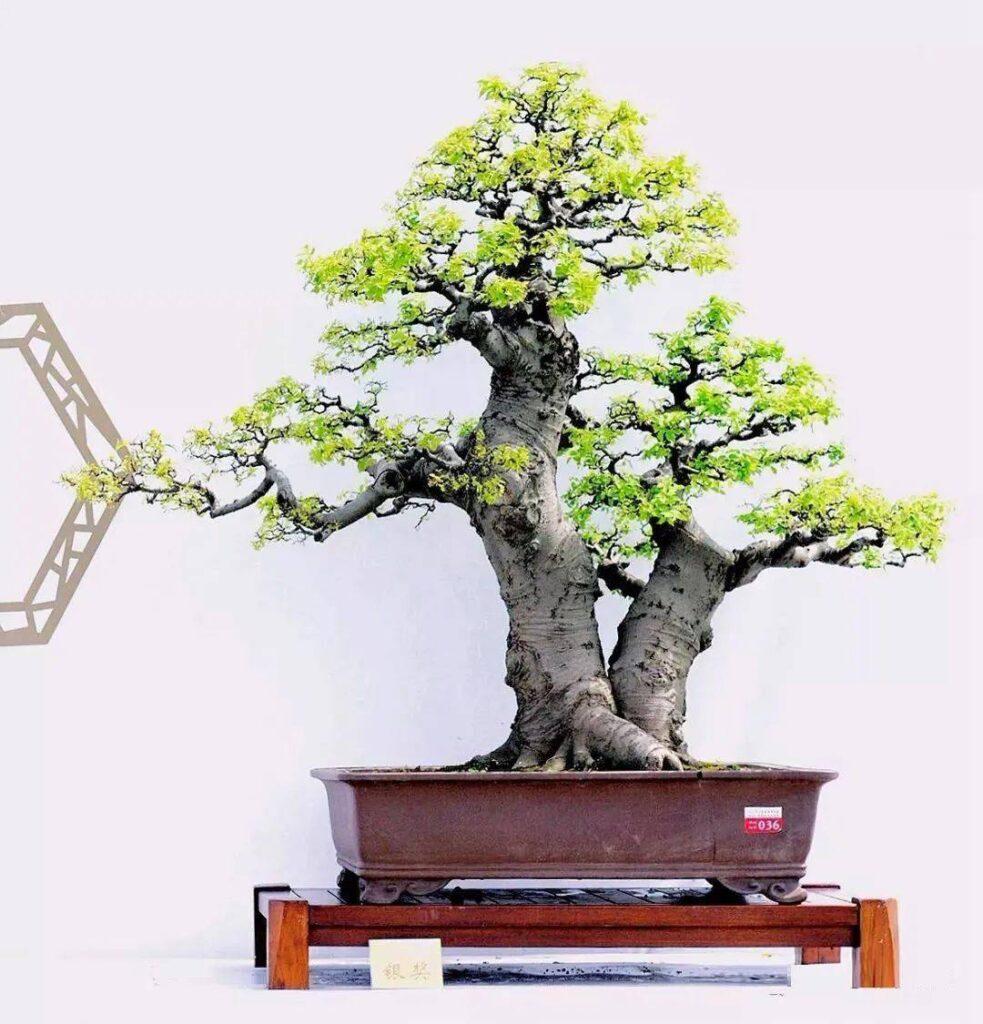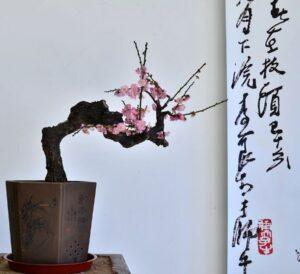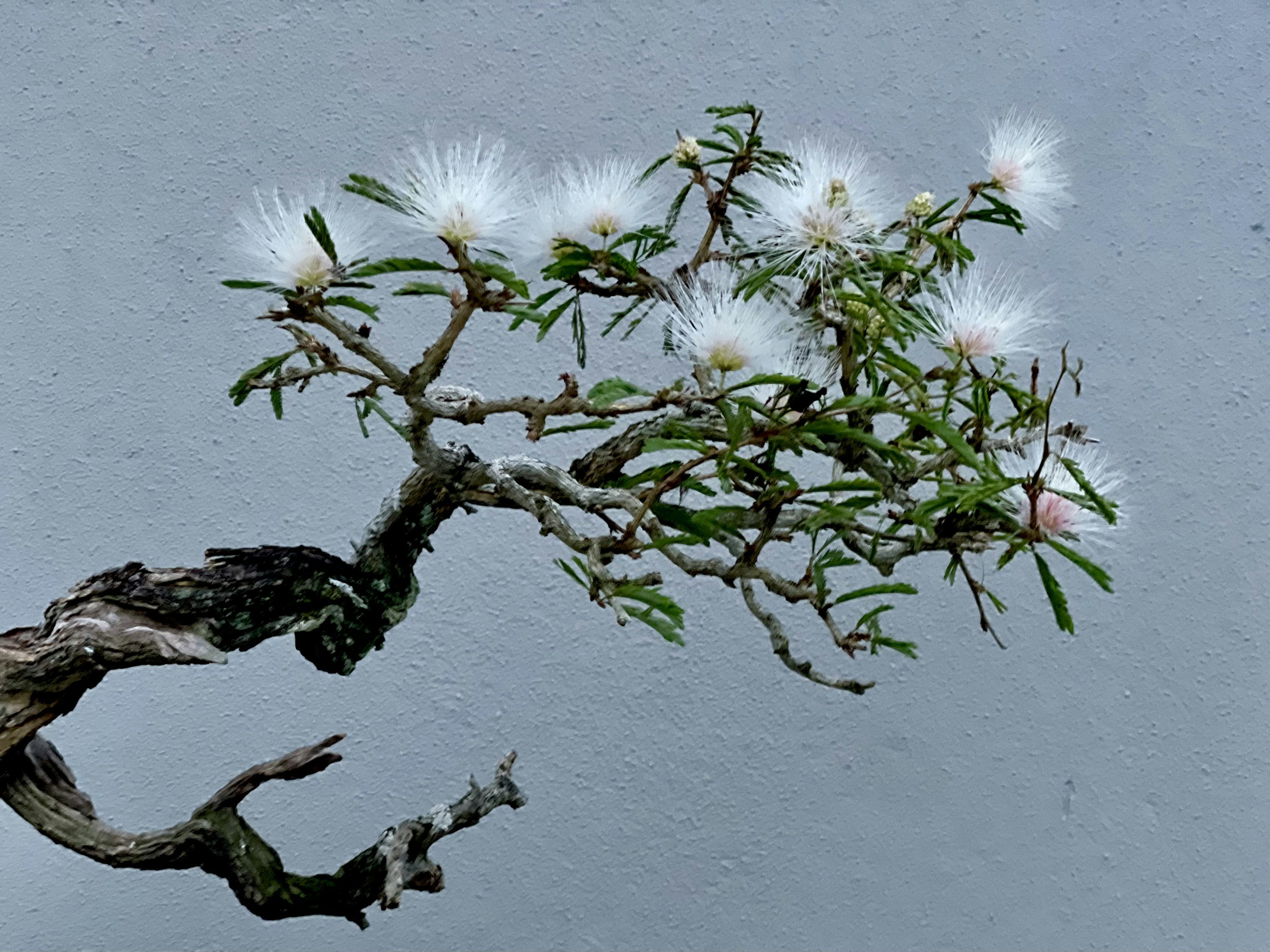
The Chinese elm (Ulmus parvifolia ) is fond of sunlight and thrives in warm, humid climates. Its form is a blend of rustic elegance and poised grace. The mottled bark, combined with its finely branched foliage, gives it a distinctive appearance that’s hard to overlook.
One of the standout features of the Chinese elm is its adaptability. It boasts a high survival rate and robust adaptability, making it a favorite among bonsai enthusiasts. The wild is teeming with these trees, and it’s not uncommon to spot uniquely shaped wild specimens being brought down from the mountains to be transformed into bonsai masterpieces.
Among all the varieties of elm trees suitable for bonsai crafting, the Chinese elm stands out. It’s widespread, almost every province in China bears witness to its presence. Furthermore, the Chinese elm bonsai holds the distinction of being one of the most abundant bonsai and stump species in China. Its popularity among bonsai lovers is undeniable, and its widespread presence is a testament to its cherished status in the world of bonsai artistry.

Crafting Your Chinese Elm Bonsai Masterpiece
- Selection: Begin with a healthy specimen. Look for vibrant leaves, sturdy branches, and no visible signs of pests or diseases.
- Styling: The Chinese elm is versatile. Whether you’re aiming for an upright, slanting, windswept, or cascading form, this tree is up for the challenge. Use bonsai wire to shape branches, but ensure it doesn’t cut into the bark.
- Soil: A mix of loam, sand, and clay is ideal. Ensure it’s well-draining to prevent root rot.
- Potting: Choose a pot that complements your tree’s aesthetics. Ensure it has drainage holes. When potting, gently spread the roots and cover with soil, pressing down to ensure stability.

The Literati style bonsai, often referred to as the Wen Ren style in Chinese, embodies a unique and artistic form. This style captures the essence of a tree that has struggled and endured harsh conditions, resulting in a twisted, contorted, and often elongated form. The Literati style is inspired by traditional Chinese paintings and literature, where trees are depicted as resilient beings, standing tall against adversity. The design is characterized by its fluid, almost calligraphic lines, and it often evokes feelings of poetic solitude and introspection. It’s a representation of nature’s dance between strength and elegance, capturing the spirit of survival and beauty in adversity.
Nurturing and Caring for Your Bonsai
- Placement: While the Chinese elm thrives in sunlight, it also appreciates shade during the hottest parts of the day. If indoors, place it near a south-facing window.
- Watering: Watering is an art. The soil should be kept moist but not waterlogged. Use a watering can with a fine nozzle to ensure even distribution.
- Fertilizing: From spring to autumn, feed your bonsai with a balanced liquid fertilizer every two weeks. In winter, reduce this to once a month.
- Pruning: Regularly trim your bonsai to maintain its shape. Use sharp scissors or shears to make clean cuts.
- Repotting: Every 2-3 years, your bonsai will need a new home. This ensures the roots have space and access to fresh nutrients. When repotting, trim back a third of the root mass.
Advanced Care Tips
- Winter Care: The Chinese elm is hardy but appreciates protection from extreme cold. If temperatures drop below freezing, consider moving it to a cool, frost-free area.
- Propagation: Propagate using semi-hardwood cuttings in summer. Dip the cut end in rooting hormone, plant in a potting mix, and keep it humid until roots develop.
- Pest and Disease Management: Regularly inspect your bonsai. For pests like aphids or spider mites, use a mild insecticidal soap. For fungal infections, prune affected areas and apply a fungicide.



One thought on “The Ultimate Guide to the Chinese Elm Bonsai Tree”
Comments are closed.